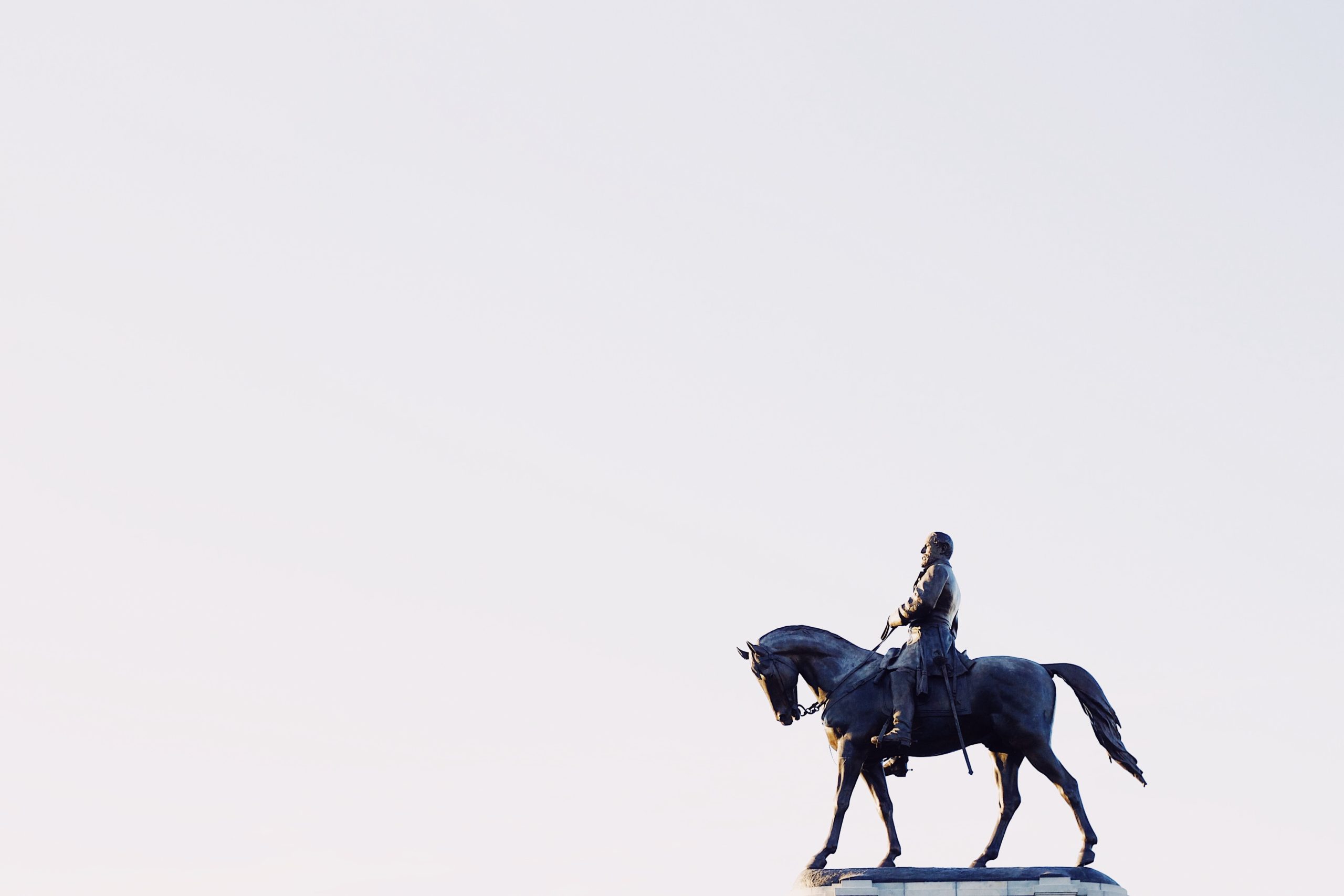
The Georgia State Capitol sits in the middle of Downtown Atlanta, famous for its golden dome-shaped roof. The Capitol is a significant landmark for Atlantans, as its grandiose architecture and governmental purpose create a sense of status within the city.
Next to the Capitol is a statue of John Brown Gordon, a Georgia governor and known former leader of the Klu Klux Klan, riding a horse while dressed in full Confederate uniform.
Gordon’s statue was built in 1907, and today, Atlantans are calling for the removal of the monument.
Since May, protests nationwide have advocated for racial equality and against police brutality. For many, this fight includes the removal of statues that represent or glorify white supremacy and the Confederacy.
Junior Bianca Acha-Morfaw is the secretary of the Young Democrats of Georgia at Georgia State.
Since 2016, Acha-Morfaw has attended numerous protests, including the Women’s March and March for Our Lives. For her, marching means “advocating for somebody that doesn’t have the time or the means to do so.”
One protest, held in Centennial Park just days after George Floyd’s death, stands out. Acha-Morfaw said she felt a sense of unity through the crowd, and those that were stuck in traffic honked and cheered from their cars.
“[The turnout] really showcased how overarching this issue is, to not just get to see people who look like me, but people who look the opposite of me, how at the end of the day, we were all saying the same chants and holding the same signs,” Acha-Morfaw said.
Incoming student Nader Osman has recently attended about eight protests and describes them as the skeleton of the racial equality movement.
“Without the protests, there’s no attention, and there’s no word getting out,” Osman said. “I find it to be super necessary for the completion of this movement. Those people that were protesting [in the civil rights movement] made the sacrifices for us to be really picky about what we want. We want true equality, and we’re coming up on true equality.”
During the first weekend of protests in Atlanta, Osman saw the streets lined with police officers, National Guardsmen and a few school buses. Next time, he showed up with one of his own.
“I own a school bus,” Osman said. “I took my school bus out and took it as an opportunity to write my voice on either side of it because I realized I basically have two big-a– billboards. So, I drove it in the middle of the protest, and the energy in the crowds was — you could tell it was all just love.”
These protests, the feeling of togetherness, is important to Osman. He grew up in Gainesville, Georgia, a place he describes as primarily white and where Confederate flags can easily be spotted. One day, he saw a street sign for Jim Crow Road and was so astonished that he stopped to take a picture.
To him, inequality feels “almost built into the identity and the infrastructure of the city.”
“I mean, I’m African American, and I’m Muslim, and my mother wears a hijab,” Osman said. “When I grew up, I started to kind of understand why people looked at me different, and it really sucked. That’s why I really love this movement because it gives people a voice.”
Acha-Morfaw and Osman strongly believe that Gordon’s statue, in front of the Capitol, should be removed.
“It’s funny because growing up, me being who I am, being a Black girl, and [I was] taking pictures next to these monuments,” Acha-Morfaw said. “Looking back at these photos, I’m just like, ‘Wow, that guy was a known racist.’ [Gordon] being in front of our state Capitol, to me, it just screams that this is who Georgia wants to be.”
Osman agrees that the statue and similar monuments are a symbol of hate.
“You have no idea how often I heard the phrase ‘The South will rise again’ in high school,” Osman said. “Because they are the beneficiaries of the atrocities, they don’t process the atrocity as it is.”
Student Roya Nabavi believes that the statues should be left alone, as long as the location is tied to the historical events. She considers it essential to demonstrate elements of history.
Nabavi uses Birmingham, Alabama, a city with many old monuments, as an example. She visited a park with statues of police officers with dogs and other scenes from the Jim Crow era and the civil rights movement.
“Nobody said that history was a great thing, and many terrible things happened in the past, but knowing about that helps us not repeat those mistakes in the future,” Nabavi said. “[In the park], we aren’t glorifying that situation because that was a terrible thing. We look at the statues, and we’re reminded of what times used to be like, so we know not to repeat them.”
Osman and Acha-Morfaw want the statues gone and agree that the figures could be preserved in a museum. Ultimately, though, Acha-Morfaw concluded that “they should never be seen again.”
